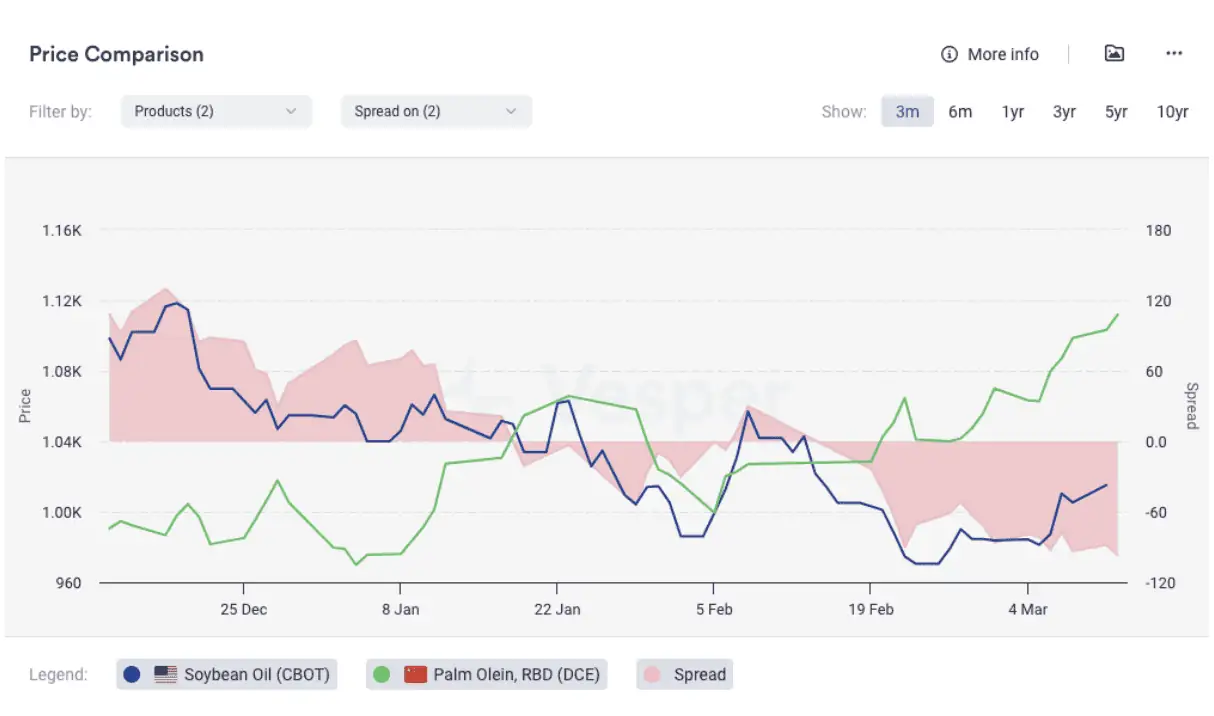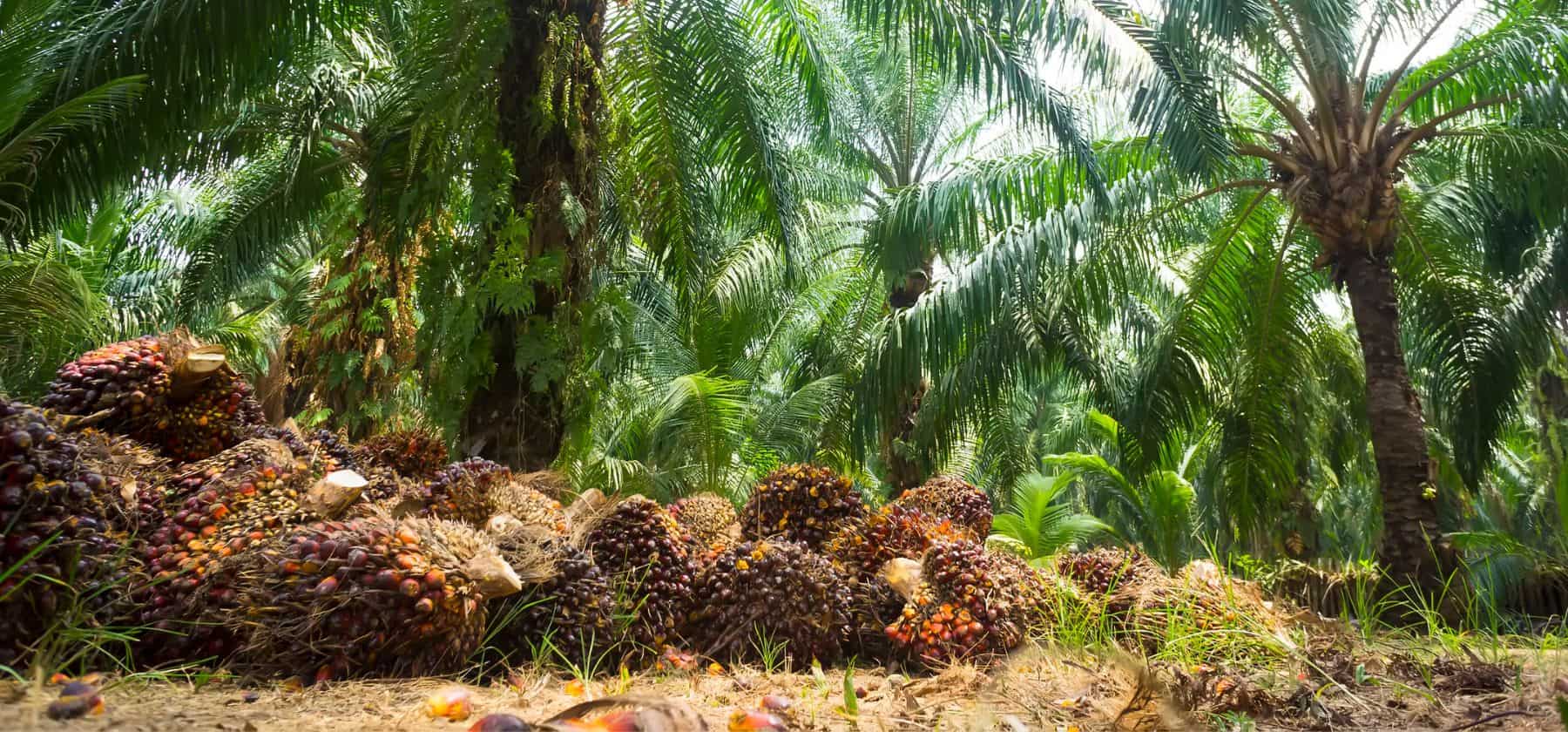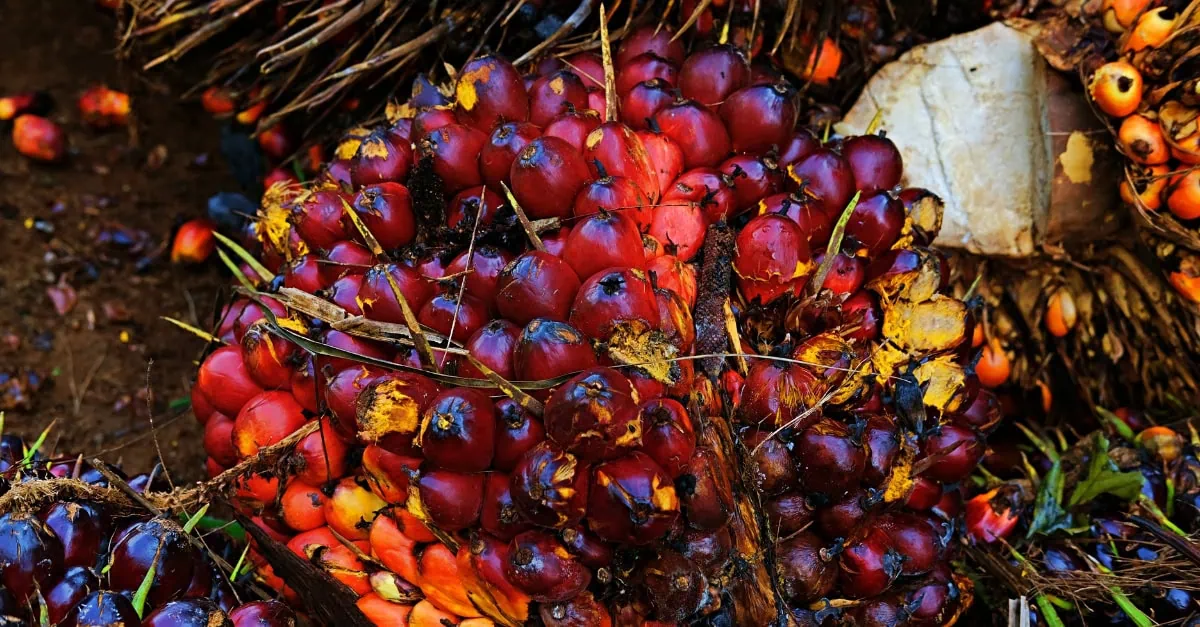Global palm oil prices increased on stronger DCE soybean oil, see Figure 1 and a slightly bullish MPOB report.

Figure 1: DCE Soybean oil (USD/mt)
The Malaysian Palm Oil Board’s Supply and Demand report for February 2024, compared to January 2024, shows significant shifts in the palm oil market.
Production saw a decrease to 1.260 million metric tons, marking a 10% drop month-over-month. Exports experienced a more pronounced fall, dropping by 25% to 1.016 million metric tons.
Exports fall below average expectations, with some market players attributing it to palm oil price premiums over other oils. According to other sources: Malaysia 1-10 Mar vs. 1-10 Feb palm oil export (in mt): SGS – 299,184 vs. 325,524 (-26,340 or down 8.09%); AMSPEC – 325,543 vs. 306,432 (+19,111 or up 6.24%); ITS – 382,640 vs. 358,365 (+24,275 or up 6.77%).
Finally, Ending stocks were also lower, at 1.919 million metric tons, which is a 5% reduction from the previous month.
Market analysts had forecasted a somewhat milder impact, expecting production to decline by 6%, exports to fall by 13%, and stocks to decrease by 6%. These expectations set a backdrop where the actual decreases, especially in exports, were notably steeper than anticipated.
The greater-than-expected drop in stocks provided upward pressure on prices. They were tempered by the positive Palm Oil-Gas Oil (POGO) spread and the premium of Palm Olein over soybean oil, acting as weights that kept the price kite from flying too high. This dynamic is detailed in Figure 2 and 3, illustrating how these factors interplay to shape the market landscape.

Figure 2: POGO (USD/mt)

Figure 3: Palm Olein-Bean Oil spread (USD/mt)
Prices also found support in statements of some speakers at the POC conference saying that Indonesian production can decrease in 2024.
For a detailed analysis of the vegetable oil and biodiesel market, Vesper offers comprehensive highlights upon request here.





